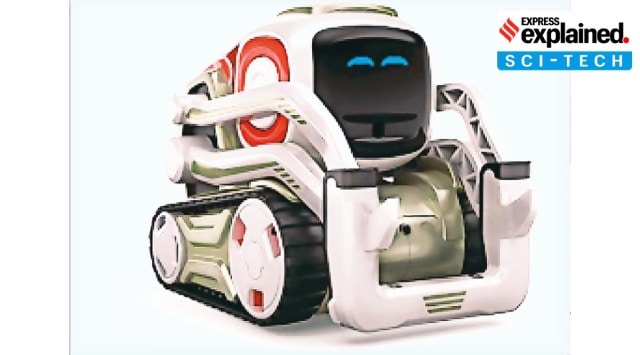New research: Using non-humanoid robots for teaching children with autism
A research paper examines whether non-humanoid robots can act as teaching aids, and whether they can reduce the workload of human special educators.
 The robot Cozmo assists special educators in verbal lessons. ICRA 2021 via
Nabanita Paul
The robot Cozmo assists special educators in verbal lessons. ICRA 2021 via
Nabanita PaulRobotICs has been used as teaching aids for children with autism spectrum disorder (ASD), but these interventions have often been expensive humanoids. A research paper examines whether non-humanoid robots can act as teaching aids, and whether they can reduce the workload of human special educators. Experiments by researchers from the Indian Institute of Science (IISc) and the Academy for Severe Handicaps and Autism (ASHA), Bengaluru, indicated that non-humanoid toy robots indeed may have significant potential in aiding special educators in autism education.
The paper was presented at IEEE International Conference on Robotics and Automation in Xi’an, China in 2021. It has now won the IISc’s Murthy Govindaraju ‘Women in Computer Science’ Research Endowment Award for one of its lead authors, Nabanita Paul.
ASD is a developmental disability caused by differences in the brain; people with ASD may behave, communicate, interact, and learn in ways that are different from most other people. In the paper, the interventions focused on ASD children’s communication and gross motor skills. The paper details three studies: a toy robot called Cozmo assists special educators in verbal lessons on school premises; a mini drone Tello helps especial educators in exercise lessons, again on school premises; and Cozmo, special educators and ASD children connect remotely for verbal lessons. The ‘Talk With Cozmo’ sessions (20 children) included storytelling followed by questions related to the story; ‘Exercise With Tello’ (55 children) included rudimentary lessons such as raising arms and squatting; and ‘Learn With Cozmo Online’ (7 children) included various aspects including spelling three-letter words and phonetic learning.
The researchers measured and compared learning outcomes with these interventions and without them.
“All three studies showed improvement in learning outcomes and reduction in prompts from the Ses (special educators), denoting reduced workload,” the paper said.
🚨 Limited Time Offer | Express Premium with ad-lite for just Rs 2/ day 👉🏽 Click here to subscribe 🚨
“Our results show that children spent more time on lessons in online intervention with Cozmo, suggesting that using robots should also be considered when designing online interventions. Furthermore, the roles of Cozmo were analysed, and we found children showed increased spontaneous interaction when Cozmo acts as a co-instructor,” it said.
- 01
- 02
- 03
- 04
- 05





































